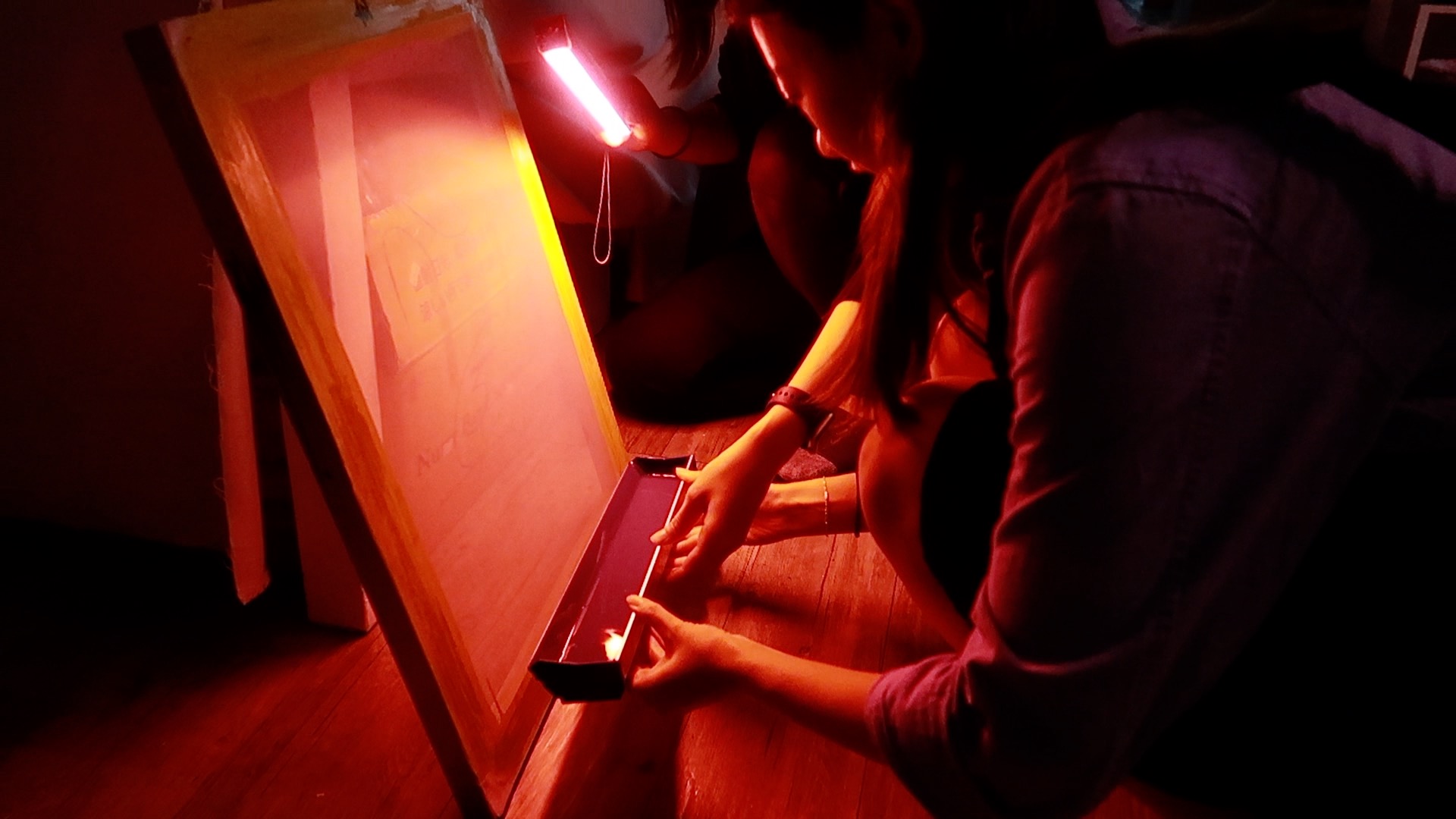"Fashion Kills" Canvas Bag
"Fashion Kills" Canvas Bag
Silk screen printed
With magnetic closure
Design and printed in Hong Kong by me!
Produced in @maketshirttogether studio.
Sorry I haven’t set up a “store” yet so PM me at @thebarezero for payment!
Important disclaimer:
Before you make the purchase, it is important that I declare as much information as possible about the bag, so you can make an informed purchase and also understand that there is a story behind each and every single bag here :)
Pricing
How it’s made
Step 0: Make the screen.
We are fortunate to be able to make the bags in @maketshirttogether studio. As a part of the workshop, they helped us prepare the screen. It is a time-consuming process, even for the experts. Selecting the screen itself requires experience. The screen will then be stretched and glued onto the panel. How ‘porous’ and tight the screen is depends on the graphic/print and the fabric it will print on. Drying the glue will take an hour or so. It isn’t something that us newbie can master just by casually strolling around!
Material used: Glue, Screen
Step 1
Layering the photosensitive emulsion onto the screen.
Material used: photosensitive emulsion
Step 2
While we are drying/baking (??) the screen, here’s what the design look like!
Material used: ink & a piece of paper
Step 3
The screen will then go on top of the visual in this UV machine. The photosensitive emulsion will only harden in areas when the light goes through. Since light won’t pass through the print (it’s black), then that part of the emulsion will not harden.
Still step 3
There you go!
Material used: Electricity for the machine…
Step 4
This is where you can see the print/text comes through! The print, which did not harden, can be washed off my water. The emulsion is water-soluble.
Material used: Quite a bit of water. I would say 3L?
Step 5
After it’s done, we’ve got to dry it
Material used: Electricity for the dryer to run…
Step 6
Picking a colour
Material used: my brain power :P
Step 7
Applying the pigment over the dried screen.
Material used: A few scoops of pigment (about 20 grams)
Step 8
Pressing the pigment over the screen! So the empty bits will be coloured. Excess pigment are being scooped back to the little pot. (I think 80% of the pigment has gone back to the pot)
Material used: Some muscles :P
Step 9
Perfecting the print. Sometimes the print is too small and the colour didn’t go through the screen. Then we had to finetune it manually.
Material used: A toothpick
Step 10
Voi-la! Here’s the final output!!
Silk screen printing vs Digital printing
As you’ve seen above, I tried to outline as much as possible the resources used in the process. A lot of details are missing, e.g. where the screen come from, the chemicals used in the pigment and emulsions, etc. There is indeed another method of printing that some considers to cause less environmental impact, i.e. digital printing, a process which a printer prints the design onto the fabric directly.
However, I opted for manual silk screen printing because (1) I would like to support the passion of the studio to keep the skills and technique of silk printing alive, (2) I would like to make each of these bag manually because it means a lot to me when I know a product is being handmade by someone. I thought the recipients of the bags would feel the same.
It is a balance between doing something manually, giving it a story vs having machines automated the process. I would much rather using a bit more water (making 10 vs 100 would use the same screen, and the water consumed will be the same), and pigment, than having you think that it is just another bag that’s printed digitally.
**Mass produced silk screen printing usually uses oil-based emulsions, meaning instead of water, they use ‘thinners’ (corrosive chemical) to wash the screens. Comparatively speaking, what we’re doing now is the lesser evil ;)
I hope you can relate to my intentions and find this bag useful for your future grocery shopping/laptop carrying/casual styling :)













